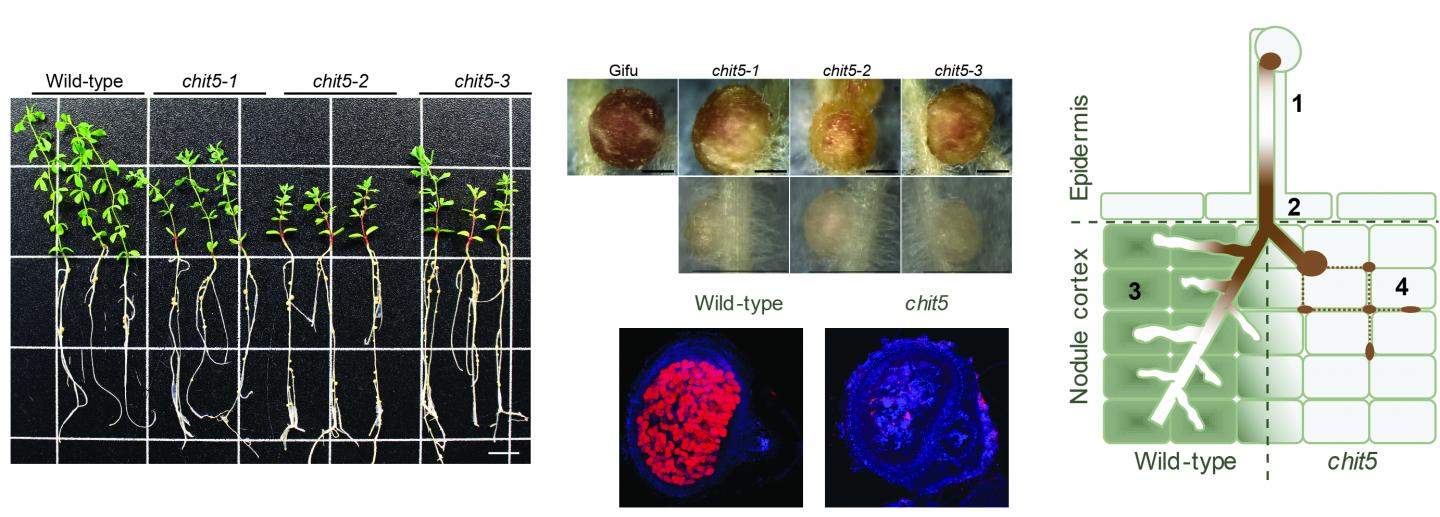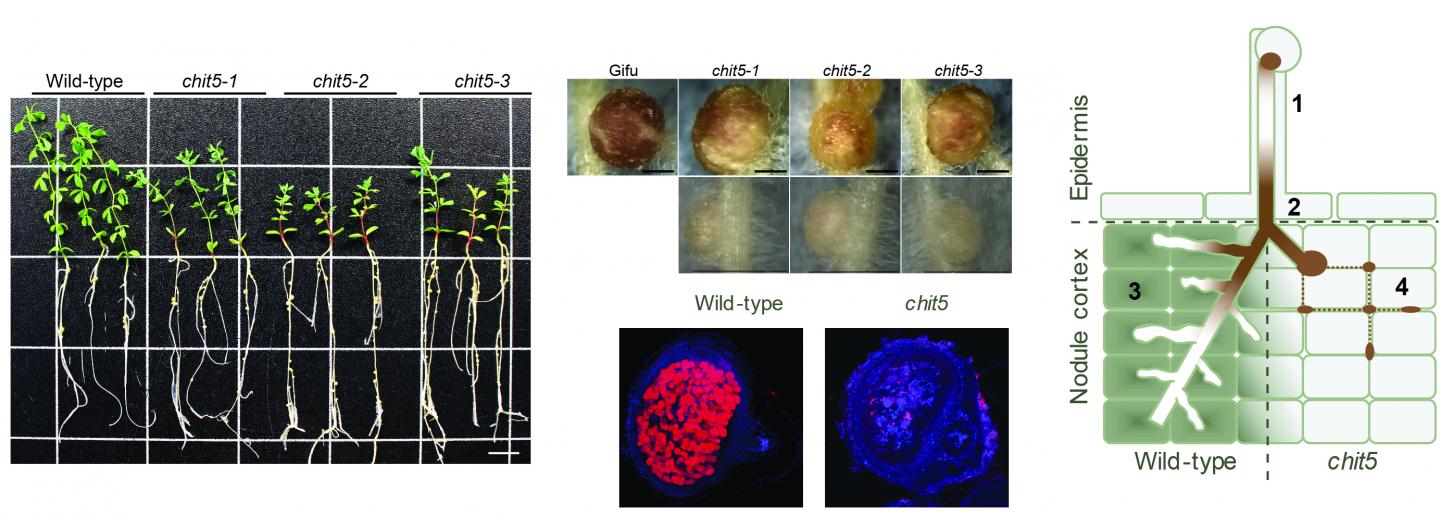
Credit: Kasper Røjkjær Andersen, Simon Kelly and Simona Radutoiu.
In the fairy tale "Goldilock and the Three Bears", the girl Goldilock goes to the bears' house where she finds three bowls of porridge, but only one has the "just right" temperature, and in the same way within biology, you can find the "just right" conditions – called the Goldilocks principle. This is precisely what an international research team has done by demonstrating that in order to get the "just right" amount of signalling for symbiosis in the roots of legumes, a specific enzyme called chitinase (CHIT5) must be present.
Trying to transfer to other types of plants.
More specifically, in their new studies, the researchers found that the chitinase CHIT5 present in legume roots is required for Nod factor hydrolysis and functional symbiosis. Their work reveals a new and crucial role of the legume host in modulating levels of specific rhizobial Nod factor morphogens during cortical infection to ensure functional symbiosis.
Morphogens are key signals for organized development in multicellular organisms. The crucial role of self-produced morphogens like retinoic acid or transformation growth factor-beta during embryo development has been long demonstrated. Molecules of microbial nature have also been shown to induce a morphogenetic response in symbiotic eukaryotic hosts, and recently gained an increased attention following the increased focus on microbiome studies. The nitrogen-fixing root nodules are lateral organs induced by a microbial morphogen. In their new studies, the researchers reveal for the first time that a developmental switch in the legume plant is ensured by the host-controlled modulation of microbial morphogen, Nod factor.
Deepening our understanding of Nod factor signalling
Nod factors have been known for decades as signalling molecules produced by rhizobia to trigger and enable dinitrogen-fixing symbiosis. In addition to their signalling capacity, Nod factors have been considered morphogens based on their effect on host developmental programmes; nodule organogenesis and infection thread formation. The researchers have found that the model legume Lotus japonicus modulates the levels of the Nod factor morphogen via CHIT5 to control colonisation of nodule primordia.
chit5 mutants display an unbalanced symbiotic signalling reminiscent of what is seen in developmental arrest at an early primordia stage. We believe that our work provides the basis for a novel layer of symbiosis research, enabling a deeper understanding of Nod factor signalling during cortical infection with direct consequences for the switch to nitrogen-fixing status. This knowledge becomes especially essential in the context of the research group's current ambitious engineering projects aiming at transferring the nitrogen fixation ability to non-legumes, which could potentially have great agricultural importance.
###
The results have just been published in the international journal eLife:
"A plant chitinase controls cortical infection thread progression and nitrogen-fixing symbiosis"
Anna Malolepszy*, Simon Kelly*, Kasper Kildegaard Sørensen, Euan Kevin James, Christina Kalisch, Zoltan Bozsoki, Michael Panting, Stig U Andersen, Shusei Sato, Ke Tao, Dorthe Bødker Jensen, Maria Vinther, Noor de Jong, Lene Heegaard Madsen, Yosuke Umehara, Kira Gysel, Mette U Berentsen, Michael Blaise, Knud Jørgen Jensen, Mikkel B Thygesen, Niels Sandal, Kasper Røjkjær Andersen, and Simona Radutoiu.
DOI: 10.7554/eLife.38874
For further information, please contact
Associate Professor Simona Radutoiu
Department of Molecular Biology and Genetics
Aarhus University, Denmark
[email protected] – +45 87155498
Media Contact
Associate Professor Simona Radutoiu
[email protected]
45-87-15-54-98
@aarhusuni
http://www.au.dk
Original Source
http://mbg.au.dk/en/news-and-events/news-item/artikel/goldilocks-principle-in-biology-fine-tuning-the-just-right-signal-load/ http://dx.doi.org/10.7554/eLife.38874





